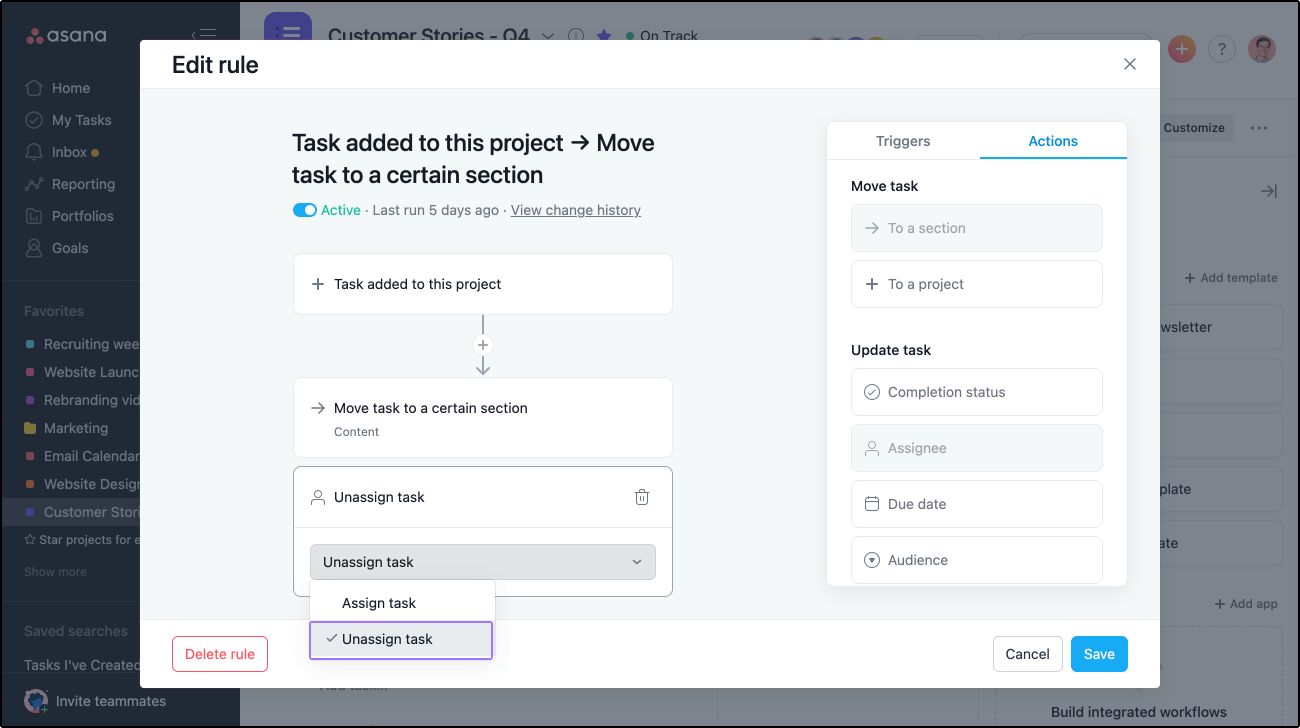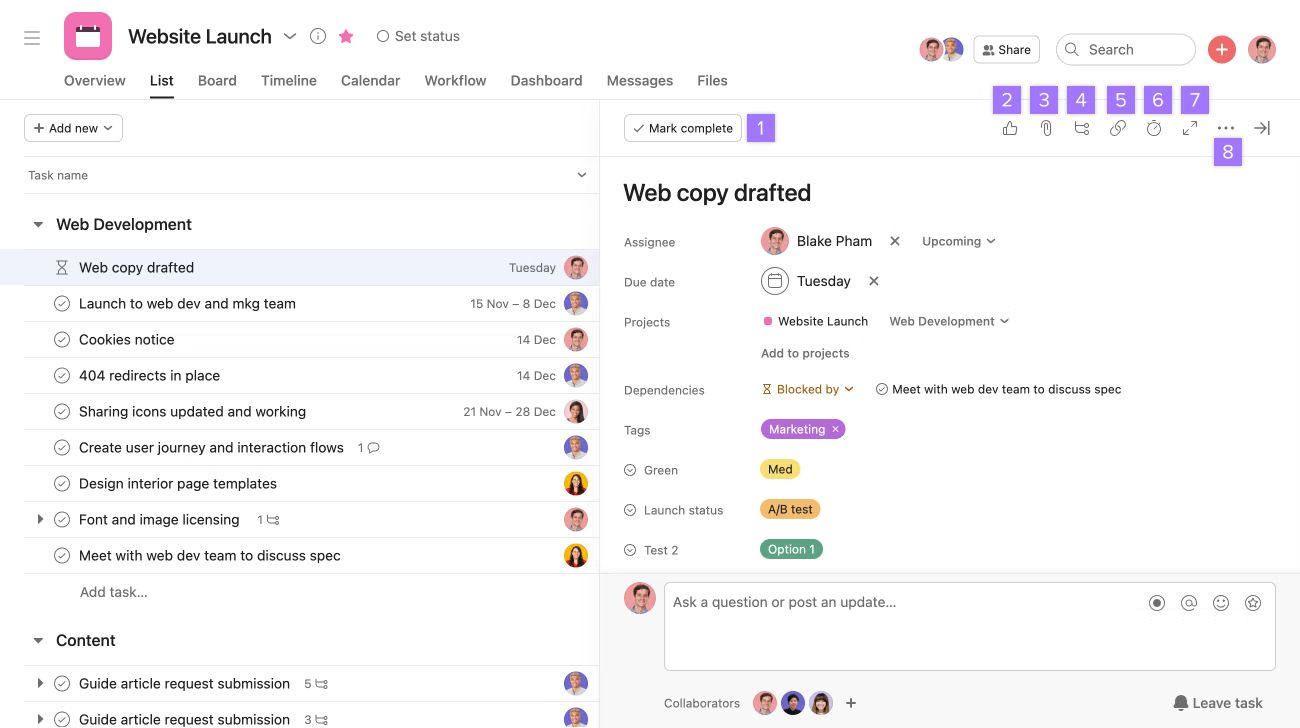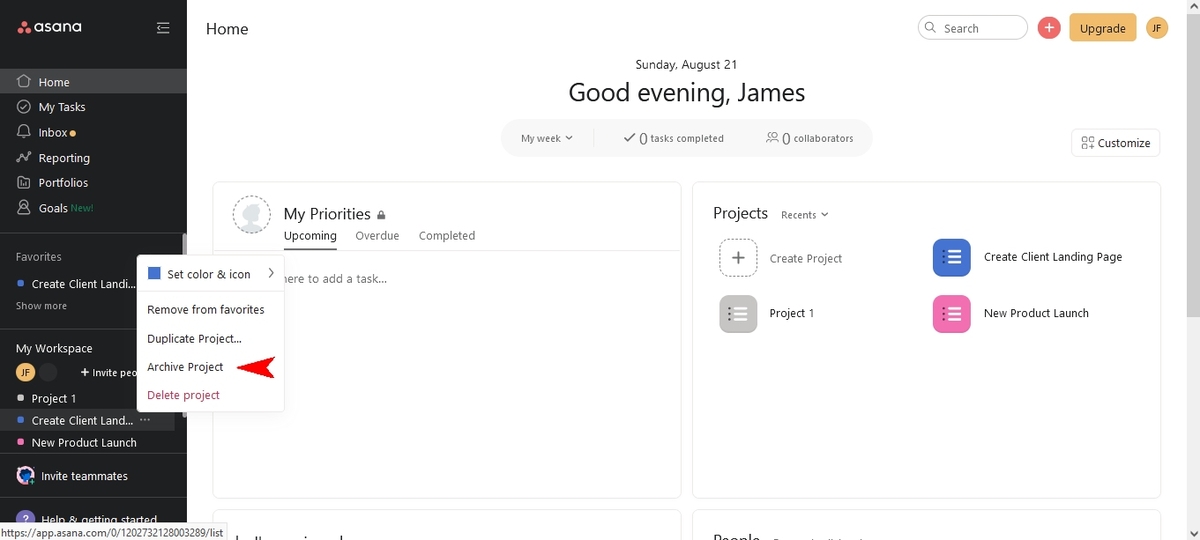Introduction
Creating forms can be a valuable tool in streamlining communication and organizing tasks within a team or organization. Asana, a popular project management software, offers a user-friendly interface for creating and managing forms. By using Asana’s form feature, you can gather important information, track progress, and ensure that all project stakeholders are on the same page.
In this article, we will guide you through the process of creating a form on Asana. Whether you are looking to collect customer feedback, conduct surveys, or create a standardized process for team members to submit requests, Asana’s form feature can help simplify and streamline your workflow.
We will cover each step in detail, from accessing the form creation options to customizing field options and sharing the form with your team or clients. By the end of this guide, you will have a solid understanding of how to create and manage forms on Asana.
So, let’s get started and dive into the world of Asana forms!
Step 1: Accessing Forms
To start creating a form on Asana, the first step is to access the Forms feature within your Asana workspace. Follow these steps to find and access the Forms:
- Login to your Asana account. If you don’t have one, sign up for free on the Asana website.
- Select the project in which you want to create the form. Forms are tied to specific projects, so you need to choose a project where you want to collect form responses.
- Click on the “+” button located in the top right corner of the window. A dropdown menu will appear.
- From the dropdown menu, select “Form”. This will take you to the Forms section of your selected project.
Once you have followed these steps, you should now be on the Forms page of your project, ready to build and customize your form.
It’s important to note that the Forms feature may not be available in all Asana plans. Make sure you are using a plan that includes access to forms. If you don’t see the option to create a form in your project, you may need to upgrade your plan.
Now that you have accessed the Forms feature, let’s move on to the next step of creating a form on Asana: adding fields to the form.
Step 2: Creating a New Form
Once you have accessed the Forms section in your project, you are ready to create a new form. Follow these steps to create a new form:
- Click on the “Create new form” button, usually located at the top right corner of the Forms page. This will open a blank form template.
- Give your form a descriptive and easily identifiable name. This name will help you and your team members distinguish the form from others in the project.
- Optionally, you can provide a brief description that explains the purpose of the form. This can be helpful for anyone who will be filling out the form, providing them with context and guidelines.
- Click on the “Create” or “Save” button to create your form.
Once your form is created, it will be added to the Forms section of your project. You can then proceed to add fields and customize the form to suit your specific needs.
Keep in mind that you can create multiple forms within a project, so if you need to gather different types of information or have separate forms for different purposes, you can repeat these steps to create additional forms.
Now that you have created your form, let’s move on to the next step: adding fields to the form.
Step 3: Adding Fields to the Form
Once you have created a new form in Asana, you can start adding fields to gather the necessary information. Follow these steps to add fields to your form:
- On the form editing page, you will see a blank form template. Click on the “Add a question” button to start adding fields.
- A question field will be added by default. Click on the field label to edit the question text.
- Choose the field type from the options provided. Asana offers various field types including short text, long text, multiple choice, and more.
- You can customize the field options based on the selected field type. For example, if you chose the multiple choice field type, you can add multiple answer options for respondents to choose from.
- Continue adding fields and customizing them as per your form requirements. You can add as many fields as needed to collect all the necessary information.
As you add fields to the form, you can rearrange them by dragging and dropping them into the desired order. This allows you to structure the form in a way that is logical and intuitive for respondents.
When adding fields, consider the information you need to collect and the type of data each field should capture. This will help ensure that your form is effective in gathering the required information from respondents.
Now that you have added fields to your form, let’s proceed to the next step: customizing field options.
Step 4: Customizing Field Options
Customizing field options in your Asana form allows you to tailor the form to collect the specific information you need. Follow these steps to customize field options:
- On the form editing page, locate the field you want to customize and click on it to open the field options.
- Depending on the field type, you will have different customization options. For example, if you have a multiple-choice field, you can add or remove answer options as necessary.
- You can also mark fields as required by enabling the “Required” option. This ensures that respondents must provide an answer for that field before submitting the form.
- Some fields, such as email or URL fields, have specific validation options. You can enable or customize these options to ensure that respondents enter valid email addresses or URLs.
- For certain field types, like date or number fields, you can set specific formatting options to ensure respondents enter the information correctly.
- Continue customizing each field as needed, making sure that the options reflect the information you want to collect and any specific requirements you have.
By customizing the field options, you can create a form that accurately captures the data you need, while also guiding respondents in providing the correct information.
Now that you have customized your field options, let’s move on to the next step: configuring form settings.
Step 5: Configuring Form Settings
Configuring form settings in Asana allows you to control how the form behaves and how responses are collected. Follow these steps to configure the settings for your form:
- On the form editing page, locate the “Form Settings” section.
- Specify whether you want to collect responses anonymously or track who submits the form by enabling the “Collect email addresses” option. This option requires respondents to provide their email address when submitting the form.
- You can choose to receive email notifications whenever someone submits the form by enabling the “Send email notifications” option. This ensures that you stay updated on new responses.
- If you want to add a confirmation message that is displayed to respondents after they submit the form, you can enter the message content in the “Confirmation message” field.
- Optionally, you can customize the submit button text by editing the “Submit button text” field.
- Review the other available settings, such as enabling or disabling browser privacy features that may affect form usage.
- Make sure to save or apply any changes to the form settings.
By configuring the form settings, you can ensure that your form functions according to your specific requirements and provides a smooth experience for respondents.
Now that you have configured the form settings, let’s proceed to the next step: sharing and collecting form responses.
Step 6: Sharing and Collecting Form Responses
Once you have created and customized your form in Asana, it’s time to share it with your intended audience and start collecting form responses. Follow these steps to share and collect form responses:
- Ensure that your form is saved and ready for use.
- Click on the “Share” button located on the form editing page. This will open the sharing options for your form.
- Copy the form’s URL provided in the sharing options. You can share this URL with your team members, clients, or any other individuals who need to fill out the form.
- You can also embed the form directly into a website or intranet page by copying the embed code provided in the sharing options.
- If you want to restrict access to the form and only allow specific individuals or groups to fill it out, you can grant permissions accordingly in Asana’s settings.
- Now, share the form URL or embed code through the desired channels – email, chat, project comments, etc.
- As individuals start filling out the form, their responses will be automatically collected and organized within your Asana project.
By sharing the form and allowing respondents to submit their responses, you can gather the necessary information and collaborate effectively with your team or clients.
Now that you have shared your form and started collecting responses, let’s move on to the final step: viewing and analyzing form responses.
Step 7: Viewing and Analyzing Form Responses
Once you have collected form responses in Asana, it’s important to review and analyze the data to gain insights and take necessary actions. Follow these steps to view and analyze form responses:
- Navigate to your Asana project where the form responses are being recorded.
- Click on the “Forms” tab within the project to access the responses.
- You will see a list of form responses, with each response containing the data submitted by the respondent.
- To view the details of a specific response, simply click on it.
- If desired, you can export the form responses to a spreadsheet format for further analysis or sharing with others. Asana offers the option to export responses to CSV or Excel format.
- Utilize the data provided by the form responses to make informed decisions, track progress, and collaborate effectively.
- If necessary, you can also create reports or visualizations based on the form responses to present the data in a more easily understandable format.
By regularly reviewing and analyzing the form responses, you can gain valuable insights, identify patterns or trends, and make informed decisions to drive your projects forward.
Now that you know how to view and analyze form responses, you have successfully completed all the steps to create and manage a form on Asana!
Conclusion
Creating forms on Asana can greatly streamline communication, improve task management, and enhance collaboration within your team or organization. With the step-by-step guide provided in this article, you have learned how to create, customize, and manage forms on Asana. From accessing the Forms feature to configuring form settings, you now have the knowledge to effectively utilize forms in your projects.
By leveraging the power of Asana’s form feature, you can easily collect information, track progress, and ensure that all project stakeholders are aligned. The ability to add fields, customize options, and share forms with others makes it a versatile tool for various purposes, such as gathering feedback, conducting surveys, or managing requests.
Remember that as you create forms, consider the information you need to collect, the field types that best accommodate your requirements, and the necessary customizations to optimize the form’s effectiveness. By tailoring your forms to capture the right data and configuring the settings accordingly, you can ensure a smooth and efficient form submission process.
Once responses start coming in, take advantage of Asana’s capabilities to view, analyze, and export the form responses. This allows you to extract valuable insights, track progress, and make informed decisions based on the collected data.
By mastering the art of creating and managing forms on Asana, you will enhance your team’s productivity, improve communication, and ultimately drive successful project outcomes. So, go ahead and start utilizing Asana’s form feature today to simplify your workflow and achieve greater efficiency!

























